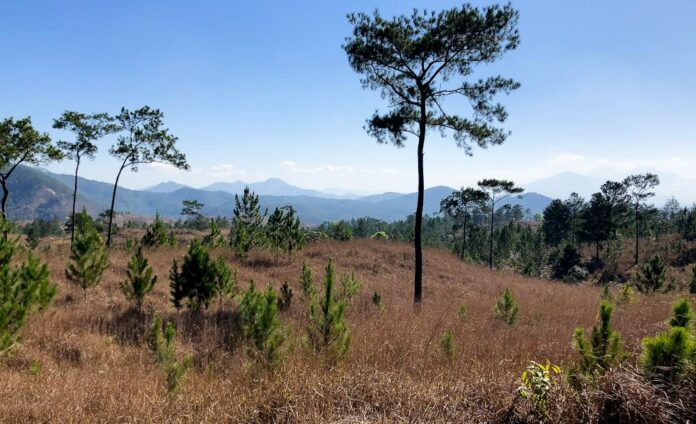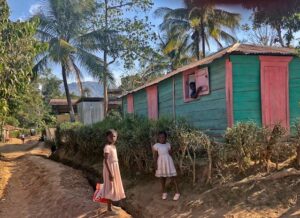
It has been said there are two nations of Haiti: Port-au-Prince and the rest of the country. While the world’s attention is focused on Port-au-Prince and the extreme dissolution that has occurred, there is a counter-narrative.
It turns out that, fortunately, other parts of Haiti are only tangentially connected to events in Port-au-Prince. Certainly high gas prices and general inflation impact the entire country, but it is not the be all and end all of forward progress one might think from reading the mainstream press.
In the remote border area of La Miel, for example, on Haiti’s central plateau, signs of progress are everywhere. Roads have been improved – using rented Dominican bulldozers – and scores of new concrete homes dot the hills. Community leaders are even predicting the advent of eco-tourism. They are proud to note there has never been any violence in the region.

The progress is not stopping in La Miel. The bulldozers have been contracted – by local mayors using grass root networks to raise funds – and are continuing their steady march to Thomassique, Cerca La Source, and throughout the region.
If Haiti was truly spiraling into chaos, how could this be happening? And how, in particular, could real estate be booming? In Ouanaminthe, where trade with the Dominican Republic creates a modicum of economic security, the price of building lots has more than doubled in the last decade.
There are multiple keys to understanding this phenomenon. The first is that Haitian governments in recent decades, both those hobbled by imperial sanctions like Aristide’s or by corruption like Martelly’s, have contributed next to nothing to the development and welfare of remote regions. So the loss of a centralized government is largely symbolic and stripped of real relevance.
The second is the ever increasing role remittances play in the overall Haitian economy. These have increased dramatically in recent years, as labor shortages in the United States are forcing employers to compete for workers.

The third factor is the implementation of new technologies – namely cell phones and solar power – that allow remote areas to leapfrog over the complex boondoggles past generations had to confront to acquire a modern infrastructure.
The fourth is the migration of wealthy Haitians from Port-au-Prince into other areas of the country, essentially spreading the wealth.
And, finally, there is the phenomenally ever-intact sense of community in rural areas, based on generations of independence and interdependence. The trust and fellowship this generates means that almost everyone wants to contribute to the common good according to their means. What is happening on Haiti’s Central Plateau is a testament to the power of this collective spirit.
Having survived so much adversity, Haitians in the “other Haiti” can now enjoy the emergence of a new phase of relative material prosperity. The biggest danger is the moral decline such augmented materialism often brings. The most common mistake in Third World countries is the whole sale unloading of ancestral lands to make way for First World developments and concomitant societal changes. A bright Haitian future means, above all, keeping collectivist Haitian culture intact.
Stephen Levien lives among Haitians in Haiti and the Dominican Republic.










